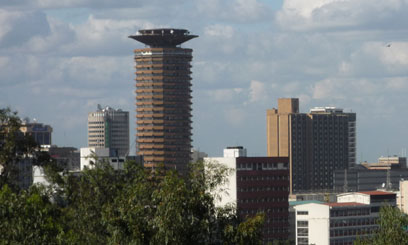NAIROBI, Kenya, Apr 4 – A report by the Society for International Development (SID) has reaffirmed East Africa’s rising profile as an investment hub in the global market.
Speaking at the launch of the State of East Africa Report 2012, East African Community (EAC) Secretary General Richard Sezibera revealed that foreign direct investments in the region were over Sh141 billion in 2010, a 152 percent increase from the Sh57 billion received a decade earlier.
Sezibera said that the world is engaging the region with increasing intensity, but he warned that foreigners could exploit the region’s resources if East Africans don’t start investing within the bloc.
“Our region has a lot of interest from the outside. I have said it before that this is East Africa’s century, but East Africans must own it,” he said.
“There’s a lack of East Africans interested in East Africa and yet the rest of the world is interested in our region, so the challenge will be to mobilise our people to work together to develop the region’s resources,” he emphasised.
SID Progamme Director Aidan Eyakuze revealed that from the year 2000 to 2010, the size of East Africa’s economy grew from Sh2.6 trillion to Sh6.5 trillion, which has spurred trade in the region and attracted significant investments both from the continent and globally.
“Intra-EAC trade expanded from Sh182 billion in 2005 to Sh339 billion in 2010 and the value of total trade with the world doubled from Sh1.4 trillion in 2005 to Sh3 trillion in 2010, expanding the share of its economy that is traded from 28 percent to 47 percent,” he explained.
East Africa has also become a critical region from a global geopolitical standpoint, as it received nearly Sh5 billion in counterterrorism funding in 2010 compared to Sh1.2 billion five years earlier.
Kenya received 74 percent of the 2010 fund, taking in the 4th largest amount of US anti-terrorism assistance, ranking only behind Afghanistan, Jordan and Pakistan.
Despite the positive economic numbers, SID Progamme Officer Ahmed Salim identified a host of problems that continue to ail the region.
“The number of East Africans living below the poverty line increased from 44 million to 53 million, even though all countries, with the exception of Burundi and Kenya, reduced the share of their population who lived below the respective national poverty line,” he said.
“The region constantly faces food security problems as was the case when the Horn of Africa experienced a severe drought and famine in 2010/2011, which saw millions face starvation and hundreds of thousands become displaced,” he noted.
Salim added that the major drivers of food security, including growing populations, the climate and the global trade dynamics that shape food prices, escape the direct control of national authorities.
The State of East Africa 2012 report compiled by the SID to analyse data across key economic, social and political indicators from the five member states of the EAC, gathered research from a variety of sources including the bureau of statistics of each country, multilateral institutions, international non-government organisations, research organisations and foundations.
The SID, which is an international network of individuals and organisations that promotes social justice and democratic participation, is seeking to drive vibrant dialogue between government officials and citizens on how to keep the integration engine moving in light of the challenges and opportunities highlighted in the report.
SID International President Juma Mwapachu (the immediate former EAC Secretary General) said the report is meant to encourage a wide range of conversations about how the EAC regional integration is proceeding and what it means for the lives of ordinary citizens.
“Regional integration is a complicated but evolving process that starts and ends with the citizenry and a key conclusion from the report is that the final responsibility for shaping East Africa’s future lies with its citizens,” he announced.
Director at the SID Regional Office for Eastern Africa Ali Hersi stressed the importance of East African countries working together in order to take advantage of the unprecedented opportunities that the region has to reshape its relationship with the world’s old and emerging economic powers.
“A successful navigation of the region’s future hinges on substantive collaboration among all stakeholders,” he declared.
“The East African Community integration process is not a project for the political or business class only. We all have a role to play in this and it’s up to us, as citizens of East Africa, as well as our partners who can make this integration work,” he added.



































